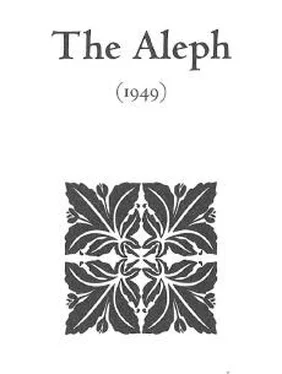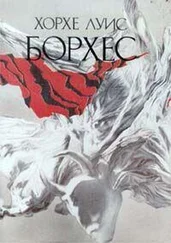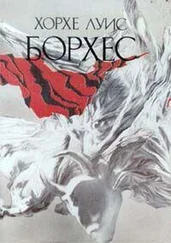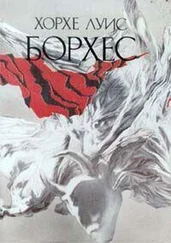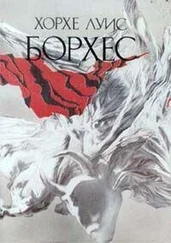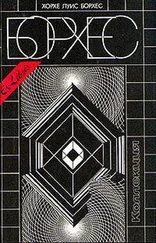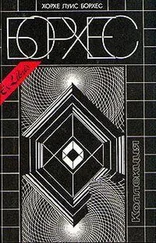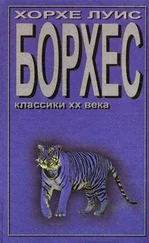Хорхе Борхес - Collected Fictions
Здесь есть возможность читать онлайн «Хорхе Борхес - Collected Fictions» весь текст электронной книги совершенно бесплатно (целиком полную версию без сокращений). В некоторых случаях можно слушать аудио, скачать через торрент в формате fb2 и присутствует краткое содержание. Год выпуска: 1999, ISBN: 1999, Издательство: Penguin (UK), Жанр: Старинная литература, на английском языке. Описание произведения, (предисловие) а так же отзывы посетителей доступны на портале библиотеки ЛибКат.
- Название:Collected Fictions
- Автор:
- Издательство:Penguin (UK)
- Жанр:
- Год:1999
- ISBN:9780140286809
- Рейтинг книги:5 / 5. Голосов: 1
-
Избранное:Добавить в избранное
- Отзывы:
-
Ваша оценка:
- 100
- 1
- 2
- 3
- 4
- 5
Collected Fictions: краткое содержание, описание и аннотация
Предлагаем к чтению аннотацию, описание, краткое содержание или предисловие (зависит от того, что написал сам автор книги «Collected Fictions»). Если вы не нашли необходимую информацию о книге — напишите в комментариях, мы постараемся отыскать её.
Collected Fictions — читать онлайн бесплатно полную книгу (весь текст) целиком
Ниже представлен текст книги, разбитый по страницам. Система сохранения места последней прочитанной страницы, позволяет с удобством читать онлайн бесплатно книгу «Collected Fictions», без необходимости каждый раз заново искать на чём Вы остановились. Поставьте закладку, и сможете в любой момент перейти на страницу, на которой закончили чтение.
Интервал:
Закладка:
p. 430: Calle Jujuy near the Plaza del Once: At its northern end Calle Jujuy runs directly into the Plaza del Once; on the other (north) side of the Plaza, it has become Puerreydon. Thus, in a sense, it begins at Rivadavia, where Borges (and apparently all older Porteños) said "the Southside began." The "Plaza del Once" (pronounced ohn-say, not wunce) is generally called "Plaza Once" in Buenos Aires, but the homonymy of the English and Spanish words make it advisable, the translator thinks, to slightly modify the name in order to alert the English reader to the Spanish ("eleven"), rather than English ("onetime" or "past"), sense of the word. Plaza Once is one of Buenos Aires' oldest squares, "associated in Borges's memory with horse-drawn carts" (Fishburn and Hughes), though later simply a modern square.
p. 431: Lugones' Lunario sentimental:Leopoldo Lugones (1874-1938) was one of Argentina's most famous and influential (and most talented) poets; the Lunario sentimental is a 1909 book of his poetry.
There Are More Things
p. 437: Turdera: A town south of Buenos Aires, rustic and apparently at this time somewhat uninviting (see the story "The Interloper," p. 348, set there). p. 438: Glew: A town near Turdera.
The Night of the Gifts
p. 446:Café Águila, on Calle Florida near the intersection of Piedad: Here two things need pointing out: First the Café Águila , whose name in Spanish is theConfiteríadelÁguila, actually existed. The confitería was the equivalent of a coffeehouse or tearoom, a place for conversation and taking one's time over coffee or tea and pastry (or light food) in the late afternoon and early evening. (One might think of Paris.) The Águila was a center for intellectuals and artists, as this sketch clearly suggests. Second is the location:Calle Florida (pronounced Flor-ee-da) was, and remains, at least near the Plazade Mayo, one of the most exclusive streets in downtown Buenos Aires; this intersection is just one block from that square. Piedad's name was changed to Bartolomé Mitre in 1906; therefore, this story must take place before that date. If this"Borges,"like Borges himself, was born in 1899, he must have been just a young boy overhearing this conversation, and the "we," in that case, must be something of a stretch!
p. 449: Juan Moreira: Agaucho turned outlaw (1819-1874) who was famous dur-ing his lifetime and legendary after death. Like Jesse James and Billy the Kid in the United States, he was seen as a kind of folk hero, handy with weapons (in Moreira's case a knife), and hunted down and killed (as this story shows) by a corrupt police. That does not mean he was not to be feared by all when he was "on a tear," as this story also shows.
p. 449: Podestá's long hair and black beard: The Podestà family were circus actors. In 1884, some ten years after the outlaw gaucho Juan Moreira's death, Juan de Podestà put on a pantomime version of the life of Moreira. Podestà and the performances were enormously famous, seen by everyone, and surely colored perceptions of the real-life story of Moreira, as movies have colored those of Jesse James and Billy the Kid.
A Weary Man's Utopia
p. 463: Bahía Blanca: A city in Buenos Aires province, south of the city of Buenos Aires; the bay of that name as well. Thus the "future man" has either traveled a bit south or the story itself takes place south of Buenos Aires.
Avelino Arredondo
p. 472: The war that was ravaging the country: This story takes place, as its first sentence reminds us, in 1897, but one must go back some four decades in order to understand the situation. Since the Battle of Monte Caseros in 1852, in which Rosas (whose troops had been occupying Uruguay) had been defeated and with his defeat Uruguay's titular independence had been won, Uruguay had undergone a series of re-volts, uprisings, and power struggles that left the country reeling. Constitutional d-mocracy was an experiment that seemed destined to fail. As in Argentina, it was the Whites (Blancos) against the Reds (Colorados), though the parties in Uruguay were conceived somewhat differently from those in Argentina; in some ways, and at the worst of times, they were simply banners under which generals vied for power, and alliances among the generals and among the Southern Cone nations were by nature shifting. Generally speaking, however, the Blancos were the traditional followers of Manuel Oribe;they were conservative, usually Catholic (as opposed to the "free-thinkers" JLB sometimes mentions), and tended to favor the rural areas over the cities; thus the party often was led by provincial, landowning caudillos whose gaucho followers made up the largest number of its members. The Colorados were the liberal, urban party, whose roots went back to the nineteenth-century caudillo Fructuoso Rivera; this was the "ruling" party in Uruguay for many years, though one president resigned saying the Uruguayans were an ungovernable people, and though the Whites were constantly pressuring the Reds (sometimes by armed uprising) for greater representation in the government. Just prior to the time of this story, the Blancos and Colorados had come to an uneasy truce, and the Cabinet of Conciliation (ministerio de conciliación) was formed. In 1894 the unlikely (and compromise) Colorado candidate Juan Idiarte Borda was elected president on the forty-seventh ballot, but in 1897 the uneasy alliance broke down; Idiarte Borda was perceived as abusing his power, of engaging in cronyism and neglecting to respect the right of the factions that elected him to enjoy some of the fruits of power, and perhaps even of rigging the upcoming elections. Just at this time the Blancos began a revolt in the interior, led by the gaucho caudillo Aparicio Saravia (see below). Idiarte Borda apparently perceived this revolt as directed against himself, but a faction within the Red party perceived it as a power grab against the entire party, which IdiarteBordacould not really be said to represent; the prominent national figure José Bauley Ordonez gave a call to arms to this Colorado faction, and suddenly Idiarte Borda found himself besieged not only by the Blancos but by a large number of his own party as well. The armed conflicts fought in the interior were marked by what must seem to us today grisly and cold-blooded brutality on the part of all contending sides in the skirmishes and battles that were fought; one history of Uruguay says that by 1897 there was a general reaction and outcry against the wholesale slitting of the throats of "prisoners." See, for instance, the story "The Other Duel" in Brodie's Report, which, though not dealing specifically with this conflict, shows the "naturalness" of this practice to the conflicts of the time.
p. 472: Battle of Ceños Blancos: In the department of Rivera; white chalk hills, with a creek of the same name at their foot. In 1897 a body of government troops under General José Villar met insurrectionist Blanco forces led by Aparicio Saravia;the "battle" (called that, not "skirmish," because of the ferocity of the fighting rather than the number of troops) was indecisive, but the Colorados came out marginally ahead. No prisoners were taken.
p. 472: Aparicio Saravia's gang of gauchos: Saravia (1856-1904) was, as Fishburn and Hughes tell us, a "landowner and caudillo, uncultured and politically unsophisticated, whose magnetic personality secured him a following among the gauchos of the Interior." Saravia and his troops fought on the Blanco side against the government of Juan Idiarte Borda; Saravia had long battled for the Blanco cause against the entrenched Colorado governments.
p. 474: [ Traveled] through the bay of La Agraciada where the Thirty-three came ashore, to the Hervidero, through ragged mountains, wildernesses, and rivers, through the Cerrohe had scaled to the lighthouse, thinking that on the two banks of the River Plate there was not another like it. From the Cerroon the bay he traveled once to the peak on the Uruguayan coat of arms: La Agraciada is indeed a bay; the Thirty-three were a band of determined patriots under the leadership of Juan Antonio Lavelleja. Lavelleja, a Uruguayan, was the manager of a meat-salting plant in Buenos Aires when the victory at Ayacucho (1824, liberating Peru from the Spaniards) was announced; he was so inspired by patriotic zeal that he gathered his "thirty-three" and they crossed the River Plate to La Agraciada Bay, and several years (and many battles fought by thousands of volunteers) later liberated Uruguay (1829). Hervidero was the place of Artigas' encampment when he ruled the five provinces he had "conquered" and put under Uruguayan rule; this rustic headquarters was on a tableland in the northwest of Uruguay, far from the "capital" city of Montevideo; it showed his "humility" and symbolized his philosophy of government. The Cerrois the conical hill on a spit of land opposite Montevideo; there is a fortress on the top, and a lighthouse, and it is represented in the top right quadrant of the country's coat of arms. All these references are the touch-stones of Uruguayan patriotism; Arredondo dreams of country in its most heroic manifestations.
Читать дальшеИнтервал:
Закладка:
Похожие книги на «Collected Fictions»
Представляем Вашему вниманию похожие книги на «Collected Fictions» списком для выбора. Мы отобрали схожую по названию и смыслу литературу в надежде предоставить читателям больше вариантов отыскать новые, интересные, ещё непрочитанные произведения.
Обсуждение, отзывы о книге «Collected Fictions» и просто собственные мнения читателей. Оставьте ваши комментарии, напишите, что Вы думаете о произведении, его смысле или главных героях. Укажите что конкретно понравилось, а что нет, и почему Вы так считаете.
